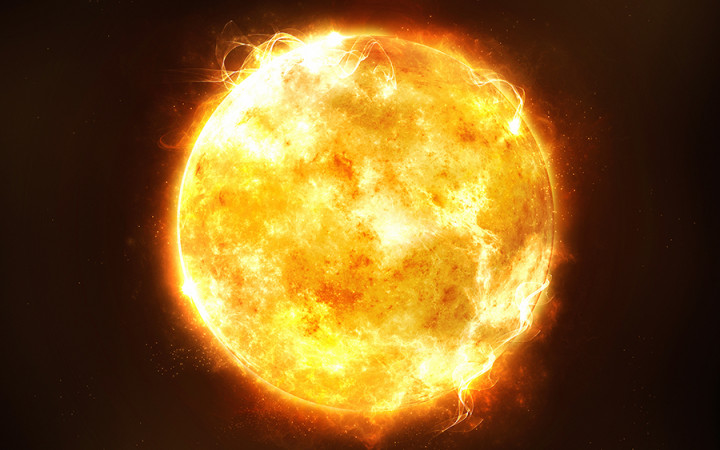Today’s Wonder of the Day was inspired by Darius. Darius Wonders, “What are stars made of.” Thanks for WONDERing with us, Darius!
Have you ever wanted something so bad that you've resorted to wishing upon a star? If so, you know it can be if that idea occurs to you in the middle of the day. It can seem like it takes forever until it gets dark enough for that first bright star to appear in the night sky.
Of course, you're probably waiting for night because of that old nursery rhyme that goes something along the lines of "star light, star bright, first star I see tonight." If you love astronomy, though, you know that there's no need to wait for night. It's even easier to wish upon a star during the day!
Why is that? It's because during the day there's a large star shining brilliantly in the sky all day long. We call it the Sun!
Even though we usually think of the twinkling lights in the night sky as stars — and most of them are! — the closest star to us is our very own Sun. Perhaps because we see it so often and Earth revolves around it, we often take the Sun for granted. Without it, however, life on Earth would not be possible.
When it comes to outer space exploration, have you noticed how you never hear about making plans to travel to the Sun? We suspect that's probably due to the fact that a spaceship would melt before getting anywhere close to the Sun.
Even if you had a spaceship that could somehow withstand the mind-boggling, intense heat of the Sun, you still wouldn't be able to land it on the Sun to explore. Unlike Earth, which has plenty of solid rock and soil to land on, the Sun isn't made up of the same kinds of materials.
Instead of solids (like rock and soil) and liquids (like water), the Sun is made up mostly of gases and plasma. In fact, the Sun is comprised almost entirely of two extremely hot gases: hydrogen and helium. Stars also usually have trace amounts of heavier elements, such as oxygen, nitrogen, carbon, and iron.
When you look at the hot, shining Sun, what you see is the result of the main process occurring inside the core of the Sun: the conversion of hydrogen into helium in an ongoing, constant nuclear reaction similar to a hydrogen bomb. Even though the Sun is in a state of constant nuclear explosion, it consists of so much matter that it will take billions of years to exhaust all of its hydrogen "fuel."
Those ongoing nuclear explosions release huge amounts of energy into the universe. We call that energy electromagnetic radiation, and it includes both the heat we feel and the visible light we see.
So much energy is produced that the hydrogen and helium involved exist as a massive, glowing ball of plasma that consists mostly of positively-charged ions with most of their electrons moving freely. Despite the explosive nature of the Sun, it appears solid because it's held together by its own massive gravity.
Not all stars in the universe are the same size or temperature. Even though our Sun looks massive to us, it's only a medium-sized star compared to others scientists have discovered and measured.
Even though our Sun is unbelievably hot, compared to other stars, the Sun is one of the cooler stars. Scientists have learned that a star's color corresponds to its temperature. The hottest stars are blue and the coolest are red. Yellow stars, like the Sun, are closer to red and are thus cooler, even though they're still incredibly hot!





